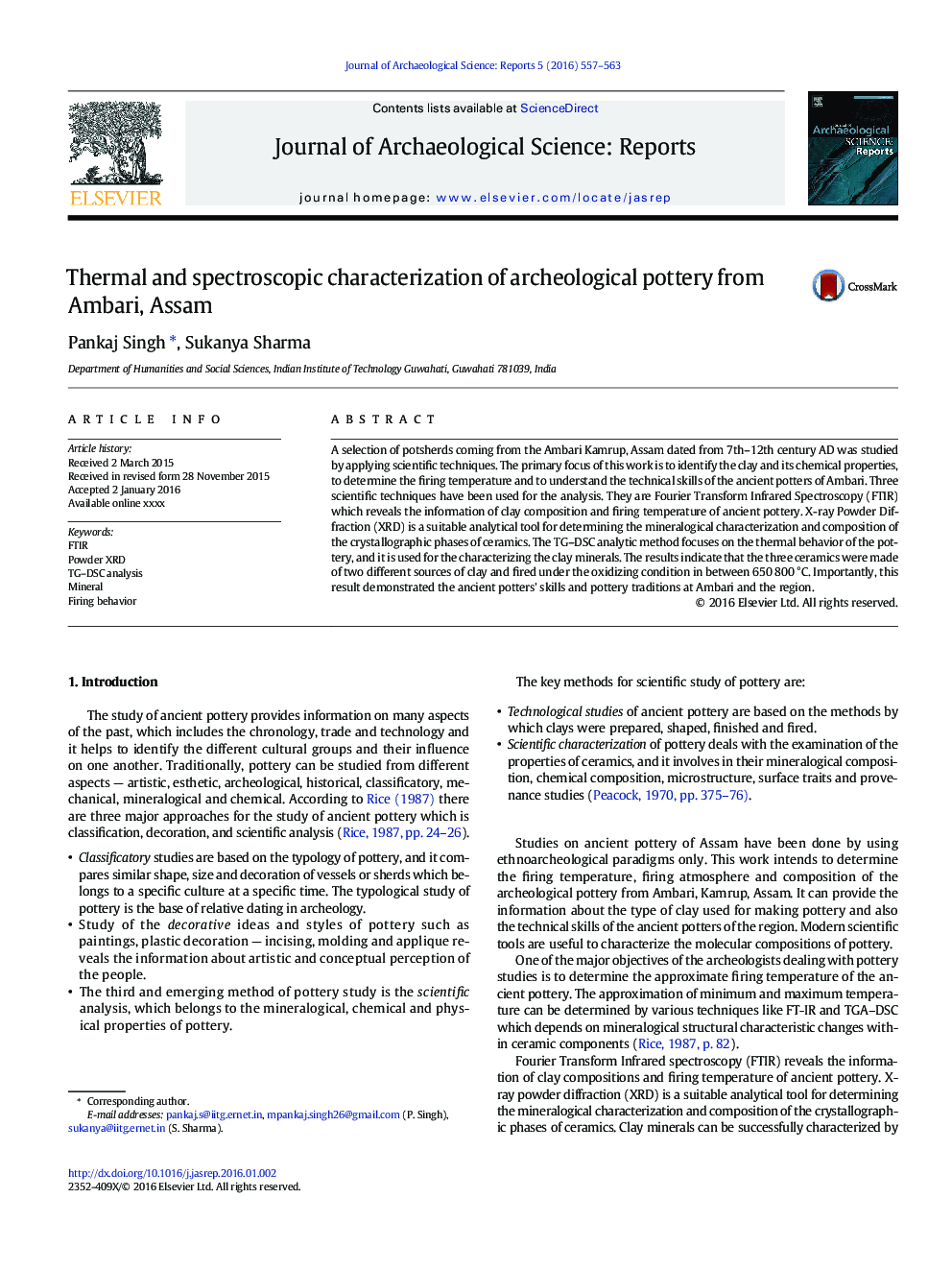| Article ID | Journal | Published Year | Pages | File Type |
|---|---|---|---|---|
| 7446438 | Journal of Archaeological Science: Reports | 2016 | 7 Pages |
Abstract
A selection of potsherds coming from the Ambari Kamrup, Assam dated from 7th-12th century AD was studied by applying scientific techniques. The primary focus of this work is to identify the clay and its chemical properties, to determine the firing temperature and to understand the technical skills of the ancient potters of Ambari. Three scientific techniques have been used for the analysis. They are Fourier Transform Infrared Spectroscopy (FTIR) which reveals the information of clay composition and firing temperature of ancient pottery. X-ray Powder Diffraction (XRD) is a suitable analytical tool for determining the mineralogical characterization and composition of the crystallographic phases of ceramics. The TG-DSC analytic method focuses on the thermal behavior of the pottery, and it is used for the characterizing the clay minerals. The results indicate that the three ceramics were made of two different sources of clay and fired under the oxidizing condition in between 650 800 °C. Importantly, this result demonstrated the ancient potters' skills and pottery traditions at Ambari and the region.
Keywords
Related Topics
Social Sciences and Humanities
Arts and Humanities
History
Authors
Pankaj Singh, Sukanya Sharma,
